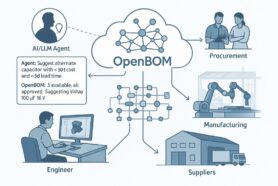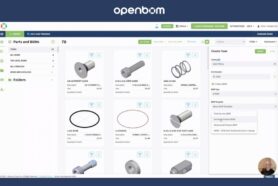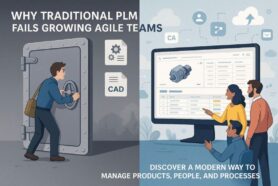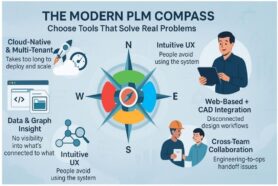
Today, I continue exploring what I learned about the pain of information management in engineering and manufacturing organizations. If you missed my previous articles, check them here:
Your engineering and manufacturing data painkillers series
The pain of engineering data management
In the complex engineering and manufacturing organization, effective information management stands as a fundamental thing to establish a successful operation. The seamless flow and accessibility of data across various departments (engineering, manufacturing, procurement) is not just a nice to have, but a critical necessity. Poorly managed data can lead to a myriad of challenges, from operational inefficiencies to significant financial losses. Working with not accurate data is like navigating a ship in treacherous waters without an accurate map. Without proper data management systems, organizations risk moving off course, resulting in costly errors and missed opportunities. Finding relevant data is the foundation of successful information management. For manufacturing organizations and manufacturing processes, it is a reason to select the right PLM from many data management platforms.
The Reality of Silos in Work Environments:
In many organizations, particularly in the fields of engineering and manufacturing, the structure of work often leads to people operating within their own silos. This is a natural outcome of engineering and other product development tasks. Each group focuses intensely on their specific area, honing their expertise and efficiency. In itself, this isn’t a problem; specialization allows for a deeper understanding and mastery of specific domains. But once these domains are looking at how to deliver a better picture they stack with a simple task – gathering data from silos to integrated data platforms (or space).
The Downside of Information Silos:
The issue arises when these silos extend to information. When each department guards its data and insights, it leads to a significant disconnect within the organization. Think about how design engineers are using their own CAD tools (MCAD, PCB, etc.), some proprietary Excel is attempting to gather information about BOMs, and all information is passed data to procurement and production for planning. This segregation of information can severely impact both efficiency and the decision-making process. Collaboration and communication between departments become strained, creating an environment where crucial data is not shared freely.

The Impact of Siloed Information:
The consequences of siloed information are far-reaching. They can include the use of incorrect or outdated data, delays in project timelines, erroneous orders, inaccurate cost planning, and the purchase of unsuitable components. One of the most detrimental effects is the slowing down of the product development process. In an era where agile practices are becoming increasingly important, the inability to adapt quickly due to information bottlenecks can be particularly harmful.
Conclusion:
Companies must prioritize information flow and data management. Modern data management technologies can do magic when it comes to implementation. Cloud tech and modern databases give you a way to optimize all data assets and data silos to satisfy business users.
If you are responsible for the organization of data management and processes, your first focus should be on enhancing the flow of information and data integration. This is where modern PLM technologies shine. To have data integration as part of modern PLM data model and flow, it can support new models of data governance and data models of data to support more efficient database queries and digital transformation on the company level. It’s essential to maintain a balance where individuals and departments can focus on their tasks while having access to the information they need from other parts of the organization. This approach not only streamlines processes but also fosters a culture of collaboration and transparency, leading to more informed decision-making and a more agile and responsive organizational structure.
REGISTER FOR FREE to check how OpenBOM can help you to kill engineering and manufacturing information silos.
Best, Oleg
Join our newsletter to receive a weekly portion of news, articles, and tips about OpenBOM and our community.










